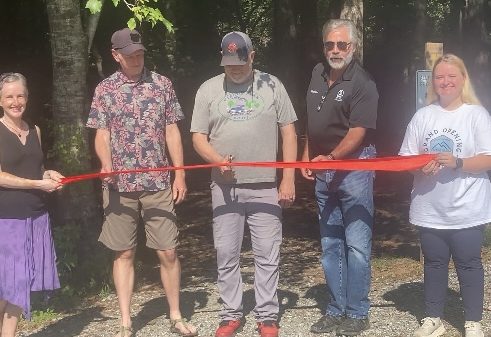Remembering Leroy McCraw and Marshall Monroe
Published 11:00 pm Thursday, September 24, 2015
By Garland O. Goodwin
I met Leroy McCraw several years ago when he came into McDonald’s with Jack Jolley. They had come from a Gideons meeting, and joined us somewhat late. A few happy breakfasts later, Leroy asked me if I tune pianos, and then asked whether I’d go to his church in a far corner of the county.
I found him there, working in a large field adjacent to the Sandy Springs Church. He let me in, showed me the pianos, and went back to the field. I got right to work, and he reappeared about lunchtime and showed me how to lock up. He later paid me to tune his daughter’s piano, a short drive from the church into Rutherford County.
Leroy continued to have a hearty breakfast with us on Saturday mornings—the guys would ask whether he was going to eat “all that,” and he just grinned and continued munching until the only things left on his tray were the wrappings. He was a good sport and enjoyed good laughs as he joined in the repartee.
He was in a car with some other WWII vets at the first big Vets’ Day parade, and invited me to join them. I was helping doll up our Lions “float,” which gave me reason to decline. (My non-combat service in the Air Force during the Korean War does not qualify me to share space with members of Brokaw’s “Greatest Generation,” in my opinion.) Leroy was a kind and generous man, who loved and served both his Lord and his fellow man with enthusiasm. Leroy makes three good friends I’ve lost to tractor accidents over the years!
Marshall Monroe also lived a life of service to his Lord and fellow man. I enjoyed frequent encounters with him and his devoted wife “Bea” over the years. When I was trying to put together a display of Mr. Vining Sr.’s desk at our Historical Museum, I needed several “old” things not readily available, since the originals were nowhere to be found. Our treasurer found a telephone, but no typewriter. I needed an open-frame manual typewriter to which I could tie a pencil (no ball pens back then) and a pair of scissors.
When I mentioned this to Marshall, he pondered only a moment before saying he would give me his old Underwood No. 5 manual typewriter. Perfect! He commented that the only thing he used it for was to type up his bowling team scores.
You may see Marshall’s typewriter in the midst of the clutter of newspapers on a big desk in the Polk County Historical Association’s Museum in the lower level of the Feagan building in Columbus. A docent will be happy to demonstrate the efficiencies of “Mr. Vining’s desk” in the Bulletin office for you. But if you cannot get by there, I offer this brief verbal description:
Call comes in, where is a pencil to take down the ad or the news item? Just tug on the string tied to the left side of the typewriter frame, and a pencil comes to your hand out of the pile of papers. Lots of newspapers are delivered to Mr. Vining in exchange for the Bulletin sent to them. You want to clip something to run in the Bulletin; where are the scissors? Just tug on the string tied to the right side of the typewriter frame, and a pair of scissors comes out of the pile to your right hand.
You see, Mr. Vining organized everything at the Bulletin office to be accomplished very efficiently, including folding and inserting the little newspapers and preparing them for mailing. It was really the only way to accomplish it all in one day!





